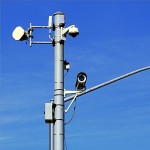The Matrix Rises

Another up-to-the-minute blog about cultural perception, this time including Vikings.
With apologies to the late, great George Carlin, they DO care about you. ITF(SM) (in the future) the CM(SM)(common man) will, after all, be batteries…or food. Those are the next evolutionary twigs on the Consumer branch of the tree. Which one holds our TF(SM) (true fate) depends largely on whether the BM(SM) (billionaire mortality) horizon—the Singularity, its other branch—winds up rooted more in IT or BT(SM) (biotech): that is, more electric or gastric in its eUP(SM) (energy uptake predeliction).
The Singularity will come only after a generation or two of CRP(SM) (cloud rent payments) have enabled sufficient BM capitalization. But don’t worry, my friends: YYH(SM) (you and your heirs, hereinafter referred to as “the livestock”) are being readied RIGHT NOW for the BE(SM) (big event) that will usher in the NCE(SM) (next current era).
Any doubts? Read on, below!
Background, 2016
Ericsson, the wireless communications company, published the following under the aegis of their Ericsson Consumer & IndustryLab—Unbiased consumer insights since arm:
These are the 10 trends for 2017 and beyond:
- AI Everywhere: 35 percent of advanced internet users want an AI advisor at work, and one in four would like an AI as their manager. At the same time, almost half are concerned that AI robots will soon make a lot of people lose their jobs.
- Setting the Pace for Internet of Things: Consumers are increasingly using automated applications, encouraging IoT adoption. Two in five believe smartphones will learn their habits and perform activities on their behalf automatically.
- Pedestrians Drive Autonomous Cars: Car drivers may not exist in the future. One in four pedestrians would feel safer crossing a street if all cars were autonomous, and 65 percent of them would prefer to have an autonomous car.
- Merged Reality: Almost four out of five virtual reality users believe VR will be indistinguishable from reality in only three years. Half of respondents are already interested in gloves or shoes that allow you to interact with virtual objects.
- Bodies Out of Sync: As autonomous cars become reality, car sickness issues will increase, and three in ten foresee needing sickness pills. One in three also want motion sickness pills for use with virtual and augmented reality technology.
- The Smart Device Safety Paradox: More than half already use emergency alarms, tracking or notifications on their smartphones. Of those who say their smartphone makes them feel safer, three in five say they take more risks because they rely on their phone.
- Social Silos: Today, people willingly turn their social networks into silos. One in three says social networks are their main source of news. And more than one in four value their contacts’ opinions more than politicians’ viewpoints.
- Augmented Personal Reality: Over half of people would like to use augmented reality glasses to illuminate dark surroundings and highlight dangers. More than one in three would also like to edit out disturbing elements around them.
- The Privacy Divide: Two in five advanced internet users want to use only encrypted services, but people are divided. Almost half would like to have just reasonably good privacy across all services, and more than one out of three believes privacy no longer exists.
- Big Tech for All: More than two out of five advanced internet users would like to get all their products from the biggest five IT companies. Of those, three in four believe this will happen only five years from now.
Reflecting on the rise of virtual reality, Michael Björn, Head of Research, Ericsson ConsumerLab, says: “Beyond real time, I believe we should be talking about reality time. In fact, what we call reality becomes ever more personal and subjective. Consumers not only surround themselves with the like-minded on social networks, but also are also starting to customize the way they experience the world with augmented and virtual reality technologies.
— Ericsson, “10 hot consumer trends 2017”
Nomenclature, Proposed
Faced with the various xR acronyms favored in the above article (x = [virtual|augmented], R= reality), we foresee great derivative value in service-marking others in this context, to wit:
- DR = degraded (or distorted) reality
- PR = perverse reality
- ER = elephantine (i.e., right-wing) reality
- JR = jackass (i.e., left-wing) reality
- MR = millenial reality
- GR = genX reality
- BR = boomer reality
- KR = Kool Aid [we drop the “reality” in this case]
- iR = infectious (Apple/Google induced) reality
And, top of the list:
- (c)R = Disney reality
Service Mark Encodings
For your information and convenience:
- HTML Entity (decimal) ℠
- HTML Entity (hex) ℠
- How to type in Microsoft Windows Alt +2120
- UTF-8 (hex) 0xE2 0x84 0xA0 (e284a0)
- UTF-8 (binary) 11100010:10000100:10100000
- UTF-16 (hex) 0x2120 (2120)
- UTF-16 (decimal) 8,480
- UTF-32 (hex) 0x00002120 (2120)
- UTF-32 (decimal) 8,480
- C/C++/Java source code “\u2120”
- Python source code u”\u2120″


